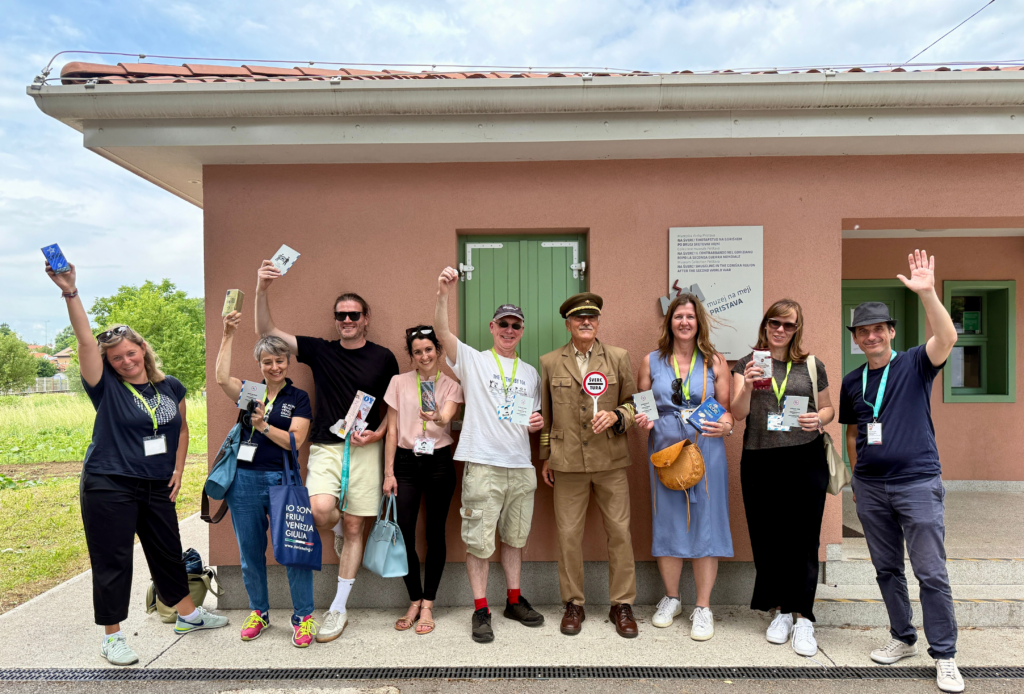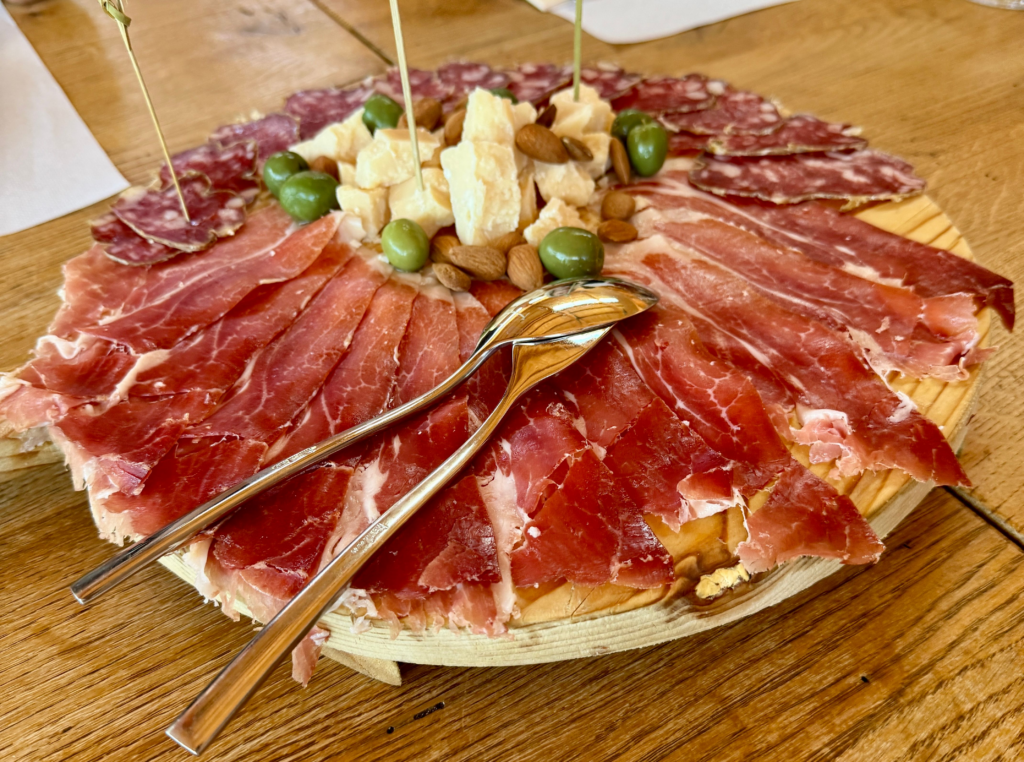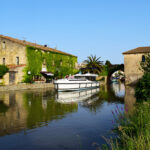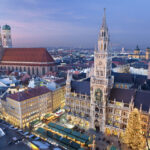
Europe in a Nutshell – The Alps to Adriatic Region
By Robert Dee, co-founder of New Deal Europe
Europe in a nutshell. That’s a bold claim, but having travelled all over Europe, I can honestly say that this region lives up to this statement. Let me tell you why you and your clients should go there.
Covering Italy’s Friuli-Venezia-Giulia (FVG), Slovenia’s Julian Alps, Vipava Valley and Karst, and extending into Umag in Croatia, this region holds a unique geo-strategic position, nestled between the Alps and the northern tip of the Adriatic (Mediterranean) Sea. It has been a crossroads of Europe for millennia. Slavic, Roman, and Germano-Austrian cultures combine uniquely here with Italian, Slovenian, Croatian and German all recognised as official national languages, and Friulian also having designated official status.
For centuries, anyone travelling across Europe from West to East passed through here, leaving their mark. Roman ruins, Venetian city walls and palaces, Austro-Hungarian residences, and ancient hilltop towns and fortresses offer testimony to the past. Unquestionably there is much to attract the cultural tourist seeking to understand not only the history of the region, but also the history of Europe.

Photo courtesy of Robert Dee, New Deal Europe
Unsurprisingly, its riches have been fought over by successive generations, leading to today’s borders; yet it now offers borderless, frictionless travel across neighbouring countries, exemplified by this year’s European Capital of Culture, Gorizia/Nova Gorica. Once divided by the Iron Curtain between Italy and Yugoslavia, the city lived split lives for nearly half a century. Today, the remnants of the Iron Curtain are a quirky and fun tourist attraction, and it is even possible to do a ‘smuggling tour’ reliving what it was like to smuggle western goods into Yugoslavia, a unique experience which I can highly recommend. But the city offers much more, including an abbey where the first book in the Slovenian language is housed and where the last Bourbon King of France is buried. Who knew?

Photo courtesy of Robert Dee, New Deal Europe
It’s true that travellers today are looking for less crowded destinations, and seeking experiences related to nature and the outdoors. The Alps-Adriatic region is the perfect destination in Europe to offer this: a jewel in the heart of Europe, yet a relatively undiscovered part of the continent, with huge potential for sustainable, responsible and active tourism. Embracing the mountain peaks of the Triglav National Park, the dramatic Sava and Soča rivers, the extensive cave systems of the Karst, (including the UNESCO listed Škocjan caves), the vast pine forests of FVG, and the varied coastline of the Adriatic, these destinations offer endless opportunities for eco-friendly activities. This includes home and farm stays often coupled with experiences unique to the region, which is potentially unrivalled in Europe… and I haven’t even mentioned that Lake Bohinj in Slovenia was named most sustainable tourism destination in the World at the World Tourism Awards, or that FVG has thirteen villages on the register of ‘I Borghi più belli d’Italia’. There is much here to tempt the visitor away from the nearby tourist hub of Venice.

Photo courtesy of Robert Dee, New Deal Europe
Activity and immersion in nature and community is at the heart of the tourism offering. Whitewater rafting and canoeing can be done on the turquoise waters of the Soča River, water sports at the coast, golf in the Alps or on one of Croatia’s two 18 hole courses, and tennis is ubiquitous in Umag (the venue for an ATP tournament it has over 70 tennis courts). A network of well-marked hiking and biking trails running from the dramatic alps to the historic coastal towns connects the region. They run through the vineyards of FVG, and Slovenia’s Vipava Valley, offering opportunities to taste and learn about the excellent local produce.

Photo courtesy of Robert Dee, New Deal Europe
Wine connoisseurs will be familiar with Collio in Italy and Goriška Brda and Vipava Valley in Slovenia whose winemakers pioneered the orange biodynamic wine movement, now acclaimed worldwide. The vineyards around Umag in Croatia are less well known but fascinating to visit, as they benefit from a rich red soil found only in a handful of places around the world. This soil also plays a part in the production of the award winning Istrian olive oils, said by many to be the best in the world. Don’t leave here without sampling courtesy of a local producer.

Photo courtesy of Robert Dee, New Deal Europe
Which leads me to gastronomy. The region is home to many Michelin starred restaurants showcasing the best of local produce and local chefs, including Ana Roš, the world’s leading female chef. But you don’t have to go high end to taste great food here. Many farms offer smoked meats and sausages, home-made cheeses, and honey, which in my view is the best you can buy anywhere.

Photo courtesy of Robert Dee, New Deal Europe
The variety of landscapes and cultures in such a small space is unparalleled in Europe. Dramatic Alps, rolling hills, vineyards, a coastline peppered with historic towns, and unique attractions such as the Lipica stud farm, where the world-famous Lipizzaner horses of Vienna’s Spanish Riding School are bred and from which they take their name, make this a true microcosm of Europe. The unique cultural and natural heritage of the Alps-Adriatic region, connected by eco-friendly transport and marked by strong cross-border cooperation, should definitely make it your next place to visit in Europe.
Practical Information
As you would expect from a region in the heart of Europe, it is exceptionally well connected, with major roads and railways, ports that are regular stops for cruise ships, and Trieste International Airport offering an increasing number of routes to key European destinations. Other major airports, such as Ljubljana and Venice, are only a short drive away. This accessibility is matched by the region’s diversity, offering a full range of accommodation options – from mountain-chic boutique hotels to campsites, private stays, and city hotels, with all the major international brands represented in one way or another. The same variety extends to DMC providers, many of whom run cross-border programmes, while others specialise in unique local experiences.
About the author:
I’m Robert Dee, co-founder of New Deal Europe and a travel professional with over 40 years’ experience. I’ve been fortunate to explore some of the world’s most fascinating places and to work with a wide range of organisations, destinations and markets throughout my career.
The European Travel Commission supports the initiative, which is co-funded by the European Union.

Posted in:






